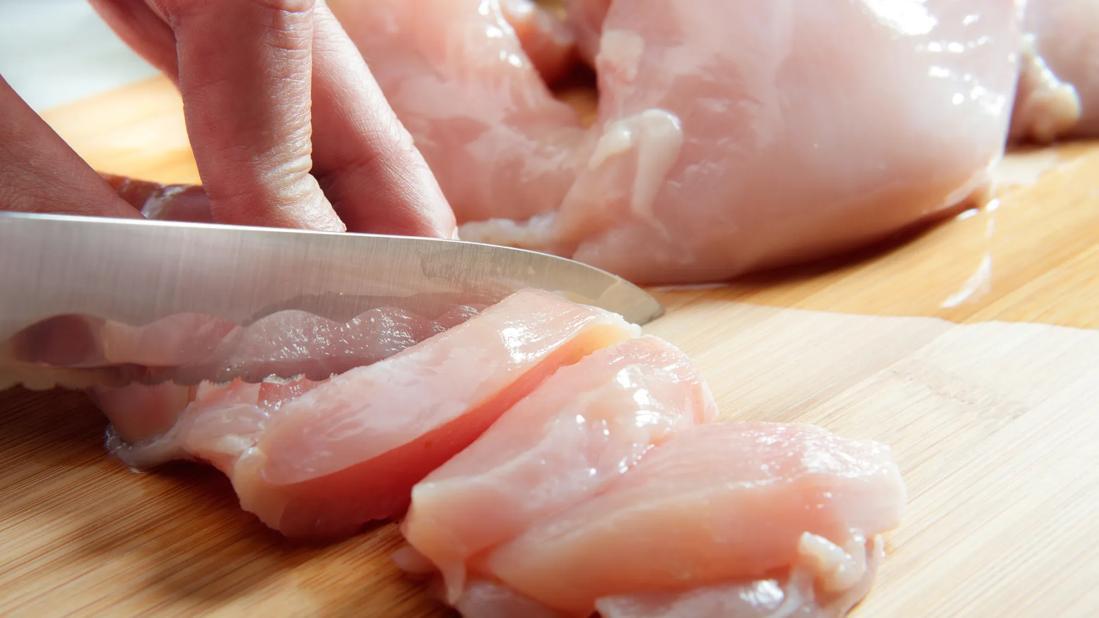Should You Wash Raw Chicken?
Rinsing raw chicken raises the risk of spreading harmful bacteria and causing foodborne illness

All sorts of icky bacteria can be found on raw chicken. So, given that nobody wants that stomach-churning stuff to reach their gut, should you rinse or wash raw chicken before cooking it?
Let’s make this answer simple: NO.
Here’s why it’s not the best idea, according to registered dietitian Beth Czerwony, RD, LD.
Why washing raw chicken is risky
Raw chicken and its juices can carry harmful bacteria like Salmonella or Campylobacter. Both can lead to foodborne illness and the uncomfortable symptoms (diarrhea, stomach pain and vomiting) that often follow.
While it may sound counterintuitive, washing raw chicken to remove bacteria can increase the chance of illness.
The reason? Let’s just say the splish-splash of chicken juice and water is problematic.
“When you rinse raw chicken, the water picks up ‘chicken juice’ and all the bacteria in it,” explains Czerwony. “You can contaminate your sink, countertops, cutlery, food and anything else in the splash zone.”
Besides, there’s NO NEED to wash your chicken before turning it into a meal. Cooking chicken to the proper internal temperature — 165 degrees Fahrenheit (73.9 degrees Celsius) — kills germs or bacteria on chicken.
“Whatever worries you might have about bacteria will be gone before the chicken hits a plate,” she notes.
Are there safe ways to clean chicken?
If you’re determined to cut down on raw chicken juices before cooking, you can gently pat the poultry with a paper towel. This method still requires caution to avoid cross-contamination, including:
- Properly disposing of the paper towel (Pro tip: Make sure your trash can is open so you don’t have to touch a handle or pull to open it.)
- Cleaning and sanitizing any surfaces and utensils that might have come in contact with the raw chicken or its juices (If you’re in doubt about whether something should be cleaned, err on the side of cleaning it.)
- Washing your hands immediately after handling chicken
Never use soaps or detergents on raw chicken, as the chemicals can make it unsafe to eat.
What about soaking chicken in saltwater?
Letting raw chicken or other meat soak in a brine solution is a personal preference and serves no purpose for food safety, according to the U.S. Department of Agriculture (USDA). (It seems this is a frequent question for the USDA’s Meat and Poultry Hotline.)
But if you do soak your chicken, the USDA recommends the following steps to avoid spreading bacteria:
- Carefully pour out the soaking liquid. Don’t reuse it.
- Wash the container you used for the soak or sanitize it in the dishwasher.
- Clean and sanitize your sink and any surfaces that came in contact with the chicken or soak.
- Keep the chicken in the refrigerator while soaking.
Other tips for handling raw chicken
What else can you do to limit the spread of harmful bacteria when you’re working with raw chicken in the kitchen? Here are four more recommendations from Czerwony.
- Always keep raw chicken or other meat stored on the lowest shelf of your freezer or refrigerator. That way, none of the juices potentially carrying bacteria can drip out of the packaging and onto other food.
- Use a separate cutting board for your raw chicken. Avoid using it for other food (especially produce) to limit the potential spread of bacteria through cross-contamination.
- Clean and sanitize any surfaces or utensils that might have come in contact with raw poultry or its juices during food preparation. (That includes your sink.)
- When cooking chicken, use a meat thermometer to ensure the meat is cooked to 165 F (73.9 C). Check the temperature at the thickest part of the meat as that’s the slowest to cook. Eating undercooked chicken (or any meat) raises your risk of foodborne illness.
Final thoughts
So, are all these precautions really necessary? Consider this: It’s estimated that about 1 million people in the United States get sick every year from eating contaminated poultry, according to the Centers for Disease Control and Prevention (CDC).
“Chicken is a great source of protein and a nutritious meal choice,” emphasizes Czerwony. “To get those benefits instead of food poisoning, be careful with chicken in the kitchen and make sure it’s fully cooked before you eat.”